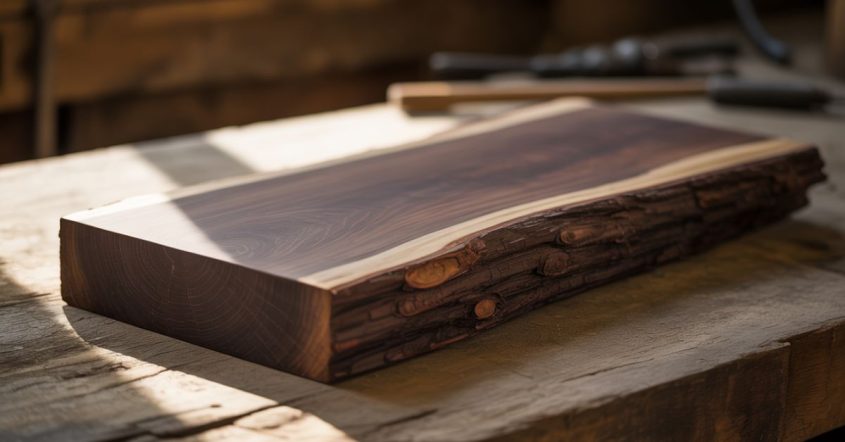Timber, also known as wood, is one of the oldest and most widely used natural materials in the world. It is sourced from trees and is considered renewable, biodegradable, and sustainable when harvested responsibly. Timber has played a vital role in human history, from building homes and boats to making tools and furniture.
Today, timber is used in many industries and for a variety of purposes. Its popularity comes from being strong, easy to work with, and good for the environment. In this article, we will explore the different uses of timber, including in construction, furniture, industry, energy, and art.
Timber in Construction
Timber is a major material in building construction. It has been used for centuries to make strong structures such as houses, bridges, and barns. Even today, it is used in modern buildings through new techniques and engineered wood products.
In traditional construction, timber is used in beams, columns, and trusses. These parts support roofs, floors, and walls. Builders prefer timber because it is lightweight compared to steel and concrete, yet still strong. It also provides good insulation against heat and sound.
Engineered wood, such as cross-laminated timber (CLT) and laminated veneer lumber (LVL), is made by gluing layers of wood together. These materials are stronger than regular timber and are used in large buildings, including multi-story apartments and office blocks.
Architectural and Aesthetic Uses
Timber is also chosen for its beauty. It adds warmth and natural charm to buildings. In modern architecture, timber is used for cladding (covering outside walls), ceilings, doors, and window frames. It comes in many shades and grains, which can create a special look and feel in a space.
Some famous buildings use timber not just for structure, but also for style. For example, the Mjøstårnet in Norway is one of the tallest timber buildings in the world and showcases how attractive and modern timber design can be.
Temporary Structures
In construction sites, timber is often used to make temporary structures like scaffolding, formwork, and shoring. These are important for building permanent structures safely. Timber is preferred for these uses because it is easy to shape, light to carry, and quick to assemble and take apart.
Timber in Furniture and Interior Design
Timber has always been popular for making furniture. It is easy to cut, shape, and join, which makes it great for crafting chairs, tables, beds, and cabinets. Both hardwoods like oak and teak, and softwoods like pine and cedar, are used in furniture making.
Wooden furniture is valued for being strong, long-lasting, and beautiful. It can be passed down through generations. Many people also love the natural feel and look of timber in their homes.
In interior design, timber is used for flooring, wall panels, ceiling beams, staircases, and decorative elements. It helps create a cozy and welcoming atmosphere. It also improves indoor air quality and reduces noise.
Some modern homes use a mix of materials, but timber remains a favorite for its versatility and style. Whether rustic or modern, timber can fit any design theme.
Industrial and Utility Applications
Timber is widely used in the packaging industry. Wooden crates, pallets, and boxes are common for shipping heavy goods. These items protect products during transport and can be reused or recycled.
Pallets made of timber are strong and affordable. They are used in warehouses and shipping industries to move goods efficiently with forklifts.
Infrastructure
Timber is used in some parts of infrastructure, such as railway sleepers, utility poles, bridges, and docks. These parts need strong, durable materials that can handle heavy loads and harsh weather. Pressure-treated timber, which resists rot and insects, is often used for such purposes.
Paper and Pulp Industry
Another important use of timber is in making paper. Timber is processed into pulp, which is then used to make various paper products, including writing paper, newspapers, packaging, and cardboard. Softwoods are commonly used for paper production because of their long fibers.
The pulp and paper industry is one of the largest consumers of timber worldwide. Sustainable forest practices are essential to ensure that this industry does not harm the environment.
Timber as a Source of Energy
Timber can also be used as fuel. Wood is one of the oldest sources of energy used by humans. Even today, in many rural and forested areas, people use firewood for cooking and heating.
Wood can be burned directly or processed into wood chips and pellets for use in stoves and boilers. This type of energy is called biomass energy. It is considered renewable as long as trees are replanted after harvesting.
Some power plants use wood waste and sawdust to produce electricity. Using timber for energy can reduce waste and lower dependence on fossil fuels. However, it must be managed carefully to prevent deforestation and air pollution.
Artistic and Cultural Significance
Timber is used to make many musical instruments. Different types of wood produce different sounds. For example, spruce and maple are used in violins, while mahogany and rosewood are used in guitars and pianos. The choice of wood affects the tone, quality, and feel of the instrument.
Musicians often prefer wooden instruments for their natural sound and beauty. Many of the world’s best instruments are handcrafted from carefully selected timber.
Art and Craft
Artists and craftsmen use timber to create sculptures, carvings, and decorations. Wood is easy to work with and can be shaped into almost anything. From traditional masks to modern art pieces, timber plays a role in many cultures around the world.
Wood carving is an ancient craft passed down through generations. In many countries, it is a way to express cultural stories and religious beliefs. Handmade wooden art is also popular in home décor and gift items.
Environmental and Health Benefits
Timber is one of the most sustainable building materials when harvested from responsibly managed forests. Trees absorb carbon dioxide as they grow. When timber is used in buildings and furniture, it stores carbon for a long time. This helps fight climate change.
Compared to steel, concrete, or plastic, timber requires less energy to produce and creates less pollution. It also breaks down naturally at the end of its life cycle.
To keep timber sustainable, forests must be managed properly. This includes replanting trees, protecting wildlife, and preventing illegal logging.
Health and Well-being
Timber can also improve our well-being. Studies have shown that being around natural materials like wood can reduce stress and boost mood. Timber in homes, schools, and workplaces helps create calm and comfortable environments.
Wood also helps regulate humidity and improves indoor air quality. It does not release harmful chemicals like some synthetic materials. This makes it a healthy choice for interiors.
Conclusion
Timber is an amazing natural resource with many uses. It supports construction, furniture making, industrial applications, energy production, and the arts. Its beauty, strength, and sustainability make it a valuable material in modern life.
As the world moves towards greener choices, timber stands out as a smart and eco-friendly option. With responsible forest management, we can continue to enjoy the benefits of timber while protecting our planet for future generations.
Whether in a tall building, a cozy home, or a piece of music, timber proves its value time and time again.
















